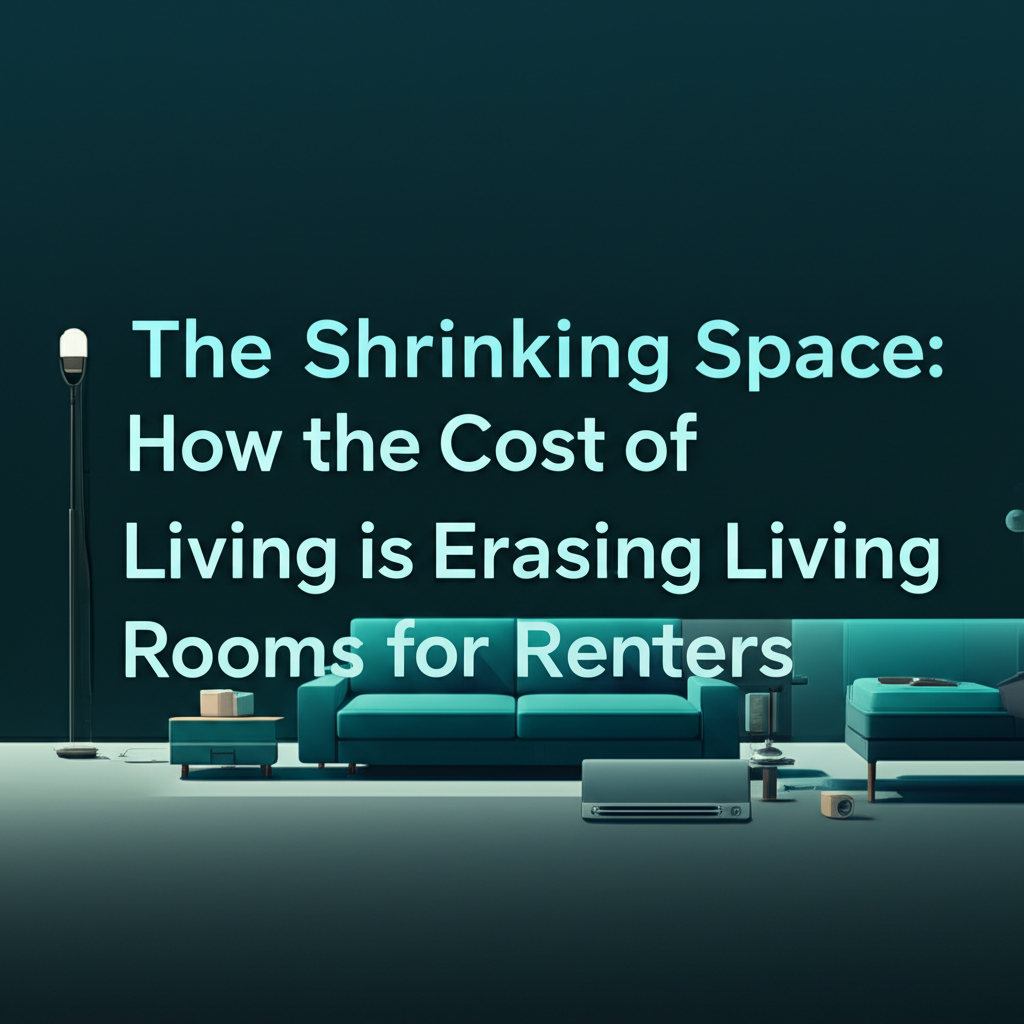
A growing number of renters, particularly on tight budgets, are finding themselves in homes without traditional living rooms, transforming the landscape of shared living. This trend highlights the intensifying pressure of the cost of living crisis on housing affordability.
Renters on Tight Budgets Face a New Reality: Homes Without Traditional Lounges

As the relentless squeeze of the cost of living crisis continues, a stark reality is setting in for many renters: the traditional living room is becoming a luxury they can no longer afford. For individuals and flatmates on tight budgets, properties without a dedicated lounge space are no longer anomalies but an increasingly common feature of the rental landscape. This forces a fundamental shift in how people live and socialize within their homes, often relocating communal activities to kitchen tables, as observed with Ella and Maisy.
This isn't merely a spatial adjustment; it's a significant erosion of the communal heart of a home, impacting social interaction, relaxation, and overall quality of life for a substantial portion of the renting population.

The primary driver of this trend is the significant imbalance between rapidly escalating rental costs and lagging wage growth across many urban centers. Landlords are increasingly converting what were traditionally communal living rooms into additional bedrooms to maximize their rental yield. By doing so, they can accommodate more occupants in a property, allowing them to divide the high overall rent into smaller, more 'manageable' portions per individual. This strategy, while increasing landlord profits, directly contributes to the diminishing communal space available to renters.
For individuals grappling with limited budgets, especially in highly competitive rental markets, accepting a home without a lounge becomes a forced compromise. It’s a clear symptom of the ongoing housing crisis and the critical need for more affordable housing solutions.
The absence of a shared living room profoundly alters the social dynamics and potentially the mental well-being of a household. Common areas are crucial for fostering interaction, providing space for shared relaxation, and cultivating a sense of community among flatmates. Without them, spontaneous conversations, shared movie nights, or even simply co-existing comfortably become challenging. This can lead to increased isolation, as individuals are more likely to retreat to their private bedrooms, reducing opportunities for organic social connection.
These conditions underscore how critical communal spaces are for supporting the emotional health and social lives of individuals, particularly in shared housing arrangements. The pressure of the cost of living is pushing renters not just to compromise on square footage, but on fundamental aspects of a healthy living environment.
The proliferation of lounge-less homes is more than just a personal inconvenience; it signals deeper systemic issues within the rental and housing markets. Addressing this will require a concerted effort from urban planners, policymakers, and community advocates. Potential solutions could include increasing the supply of genuinely affordable housing, implementing stronger rental protections to curb excessive rent hikes, or even reassessing minimum space standards for rental properties to ensure a baseline quality of life for all residents.
As cities grow denser and affordability becomes an ever-greater challenge, the conversation around what constitutes 'adequate' housing must evolve. The loss of the living room is a powerful symbol of how economic pressures are fundamentally reshaping our homes and our lives.

Mehebub Alam
Author
Share this post:
Stay up-to-date with the latest insights and news in technology and business.
By subscribing, you agree to our Terms and Privacy Policy.
Explore more articles from our blog.

Microsoft has announced that Halo Infinite will transition into maintenance mode later this month, a strategic move by 343 Industries to shift its focus towards the development of multiple new Halo games. This decision marks a significant turning point for the iconic sci-fi shooter series.

Best Buy's highly anticipated Black Friday Doorbuster sales continue with the release of 'Week 2' deals. Shoppers can now dive into a fresh wave of discounts across popular electronics, offering a prime opportunity to snag holiday gifts early and beat the rush.

Apple is reportedly gearing up to release a new, lower-cost MacBook in 2026, aiming to make its premium laptop experience more accessible and compete directly with the burgeoning market for budget-friendly notebooks, including Chromebooks. This strategic move could redefine Apple's presence in the education and mainstream computing sectors.